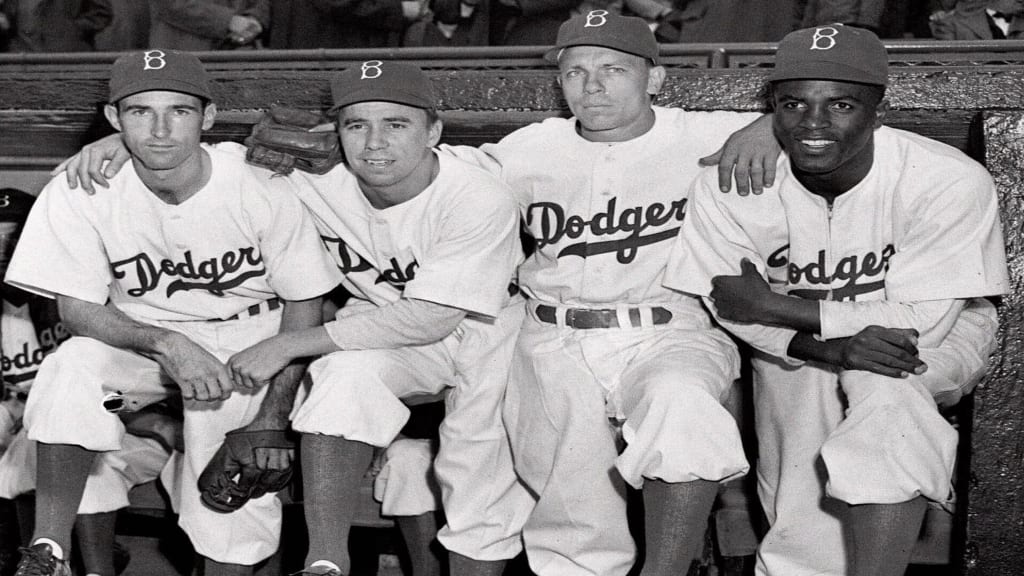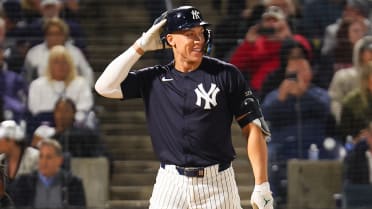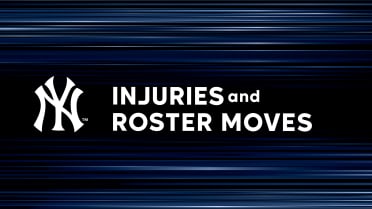Stories from around MLB amid Jackie's debut in '47
Ruth, Berra and Greenberg were also in the news that day

Jackie Robinson’s debut with the Brooklyn Dodgers was a momentous and unforgettable day in the history of Major League Baseball. It was 73 years ago when Robinson broke the color barrier in Major League Baseball, so to help put that in context, it might be useful to note what else what happening around the sport just before and after April 15, 1947.
The Bambino watch
Babe Ruth’s playing career ended in 1935. He had hoped for a chance to manage the Yankees, but the club had no interest in him replacing Joe McCarthy. As his retirement progressed, it was clear Ruth’s many years of hard living were catching up to him.
He was in and out of the hospital many times, including twice for apparent heart attacks. In November 1946, Ruth complained of extreme pain over his left eye and was admitted to a New York hospital. He was found to have a malignant growth on the left side of the neck. Much of it was surgically removed, but some could not be and had to be treated with radiation.
Ruth remained in the hospital for three months and lost 80 pounds. He was released in February and went to Florida to recover, but his diminished physical appearance was evident to all.
His condition dominated the news. In March, Commissioner A.B. “Happy” Chandler announced that April 27 would be Babe Ruth Day throughout baseball. Baseball’s most famous player passed away on Aug. 16, 1948.
Durocher out in Brooklyn
On April 9, 1947, the Dodgers distributed a short news release in the Ebbets Fields press box announcing Robinson’s contract was being purchased from the Montreal Royals. That was not the biggest story in the New York sports sections the next day. Foremost was the news that Dodgers manager Leo Durocher had been suspended for one year by Chandler.
Durocher was a great baseball manager, but he also had a dubious off-field lifestyle that grew more disconcerting to Dodgers president Branch Rickey and the Commissioner as the 1946-47 offseason progressed.
Durocher’s relationship with actor George Raft was one concern. Raft's entourage included a few well-known mobsters. Also troubling was Durocher’s love affair and subsequent marriage to actress Laraine Day, who was in the midst of a divorce when she married Durocher that year. The matter ended up in California court and caused more headaches for the baseball establishment. (You can read more about it in Day’s New York Times obituary.)
Then, while the Dodgers were in Cuba for Spring Training, Durocher’s ghost-written column in the Brooklyn Eagle stirred up ill feelings and a feud with Yankees president Larry MacPhail. He had been the one who had originally hired Durocher in Brooklyn. There were also reports that MacPhail had tried to steal Durocher away to manage the Yankees that winter.
Chandler added it all up and decided to suspend Durocher, leaving Rickey to search for a replacement. On Opening Day, the Dodgers did not even know who their manager would be. Coach Clyde Sukeforth served as interim manager that day while Rickey was luring Burt Shotton out of retirement in Florida to take over.
Berra in for DiMaggio
The Dodgers did not know who their manager was on Opening Day, and the Yankees did not know when Joe DiMaggio would return to their lineup.
DiMaggio had undergone surgery on Jan. 7 to remove a bone spur from his left heel. He arrived in Spring Training and needed a cane to disembark from the plane. The foot had become infected and DiMaggio flew to Baltimore for a second operation just one month before Opening Day. Doctors said DiMaggio might be back by June or July.
Veteran Johnny Lindell, the team's fourth outfielder in 1946, started in center field for the Yankees on Opening Day. But the real surprise might have been in right field. Rookie Yogi Berra, after impressing everybody at the plate in Spring Training, got the start in right field with Aaron Robinson behind the plate. Berra, who had been a late-September callup in ’46, could swing the bat, but the Yankees didn’t know where to put him defensively.
Berra had shown an erratic arm behind the plate, so the Yankees tried him in right field. He was 0-for-4 on Opening Day and the Yankees, before a home crowd of 39,334, took a 6-1 loss to the Philadelphia Athletics, a team managed by 84-year-old Connie Mack that lost 105 games the previous season.
The once-great Yankees appeared to be a mess. DiMaggio unexpectedly returned on April 19. In his first game back, he was bowled over by Berra chasing a fly ball. In May, the Yankees put Berra behind the plate. The rest is history (though Berra did become an outfielder again later in his career).
Exit to Pittsburgh
Despite DiMaggio’s absence, there were 21 future of Hall of Famers who took the field across Major League Baseball on Opening Day 1947. That doesn’t include starting pitchers Warren Spahn and Bob Lemon, who were passed over for the Braves' and Indians' Opening Day assignments.
One future Hall of Famer was Hank Greenberg, who had been with the Tigers from 1933-46, although he had missed three full seasons and parts of two others because of World War II military service.
Greenberg had helped the Tigers win four pennants and two World Series and had led the American League with 44 home runs and 127 RBIs in 1946. His .604 slugging percentage was the second highest behind Ted Williams. But his batting average had dropped to .277 and Greenberg spent much of the summer in the training room.
The Tigers felt the end was near and sold him to the Pirates. Greenberg considering retiring, but the Pirates offered to make him the first $100,000 ballplayer and he relented.
Greenberg became a mentor for promising young slugger Ralph Kiner. Greenberg, who was Jewish and had faced prejudice as well during his career, was also a big supporter of Robinson and offered him much encouragement during the season. Greenberg retired after one year in Pittsburgh.
T.R. Sullivan covered the Rangers starting in 1989, and for MLB.com from 2006-2020.




